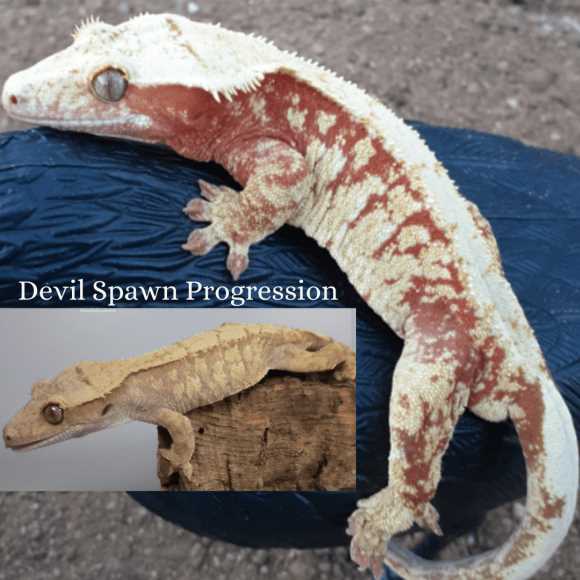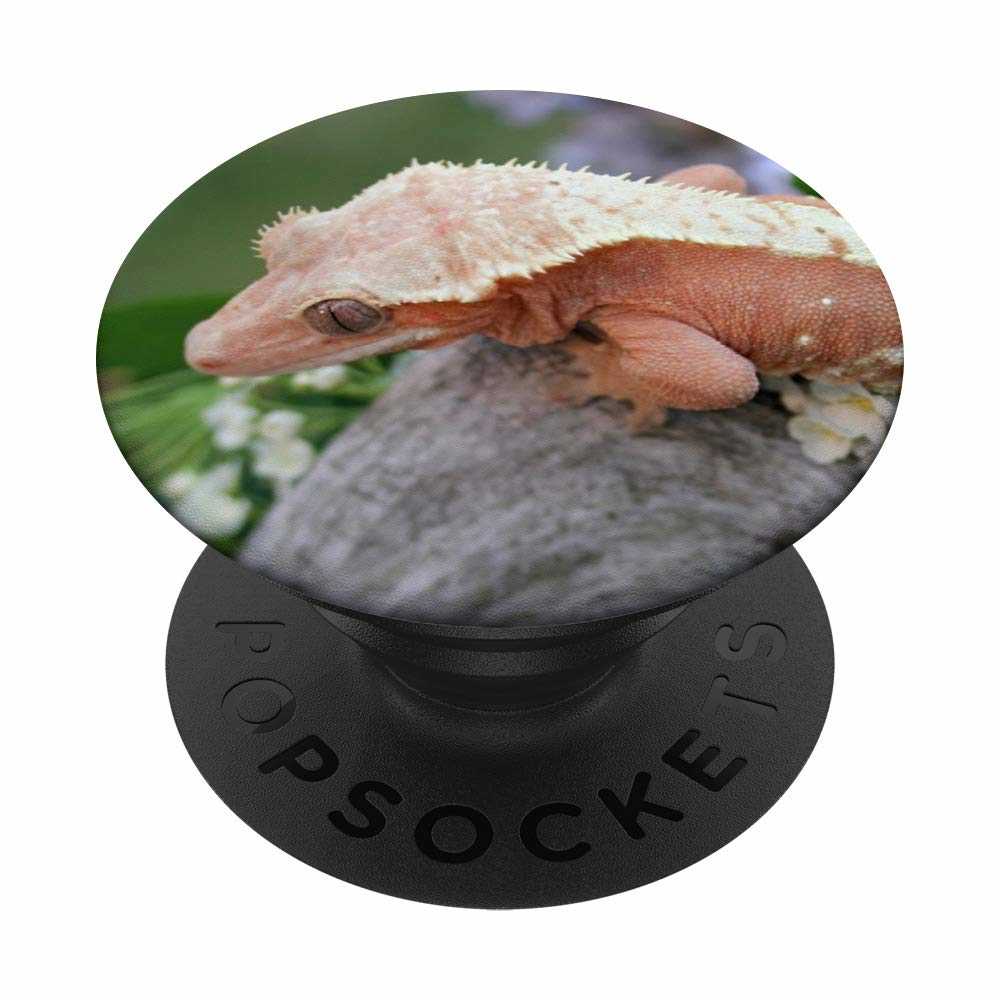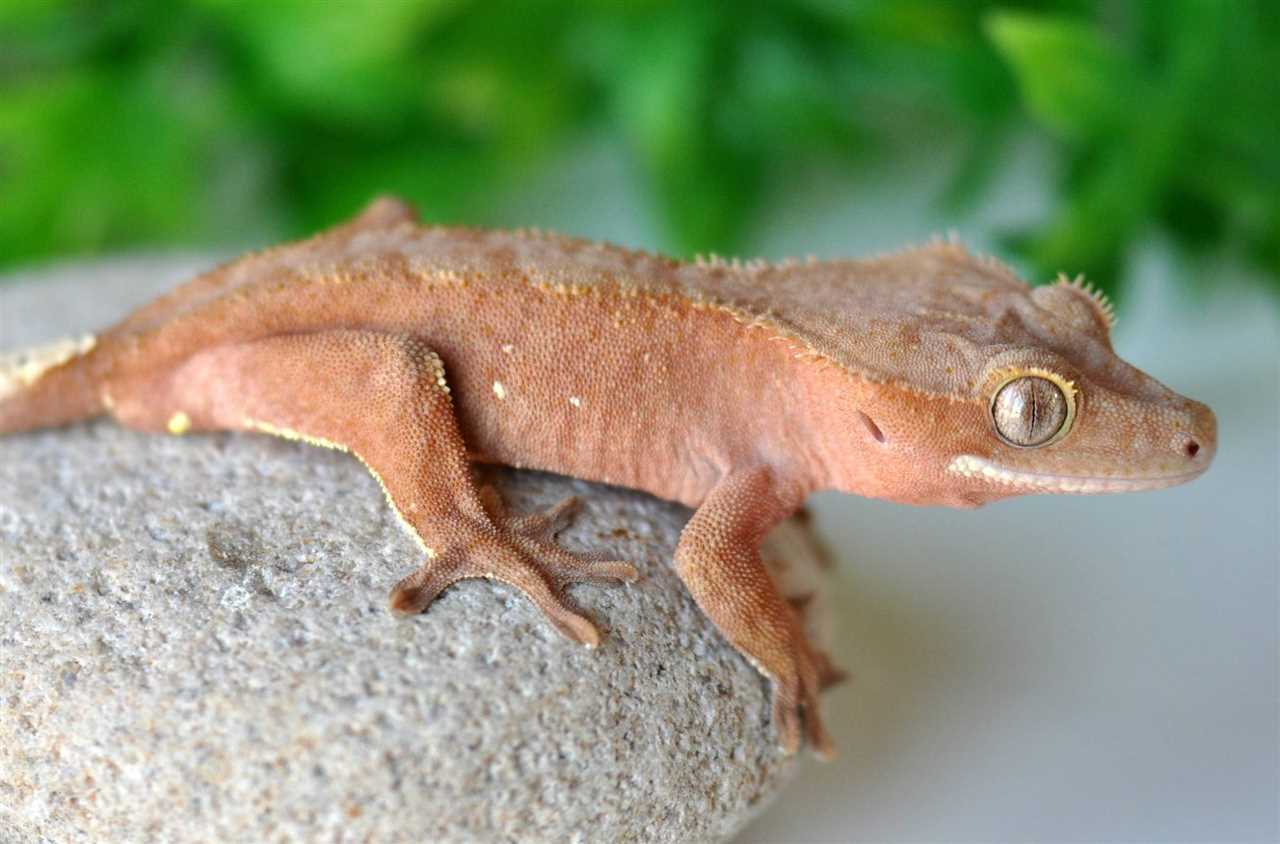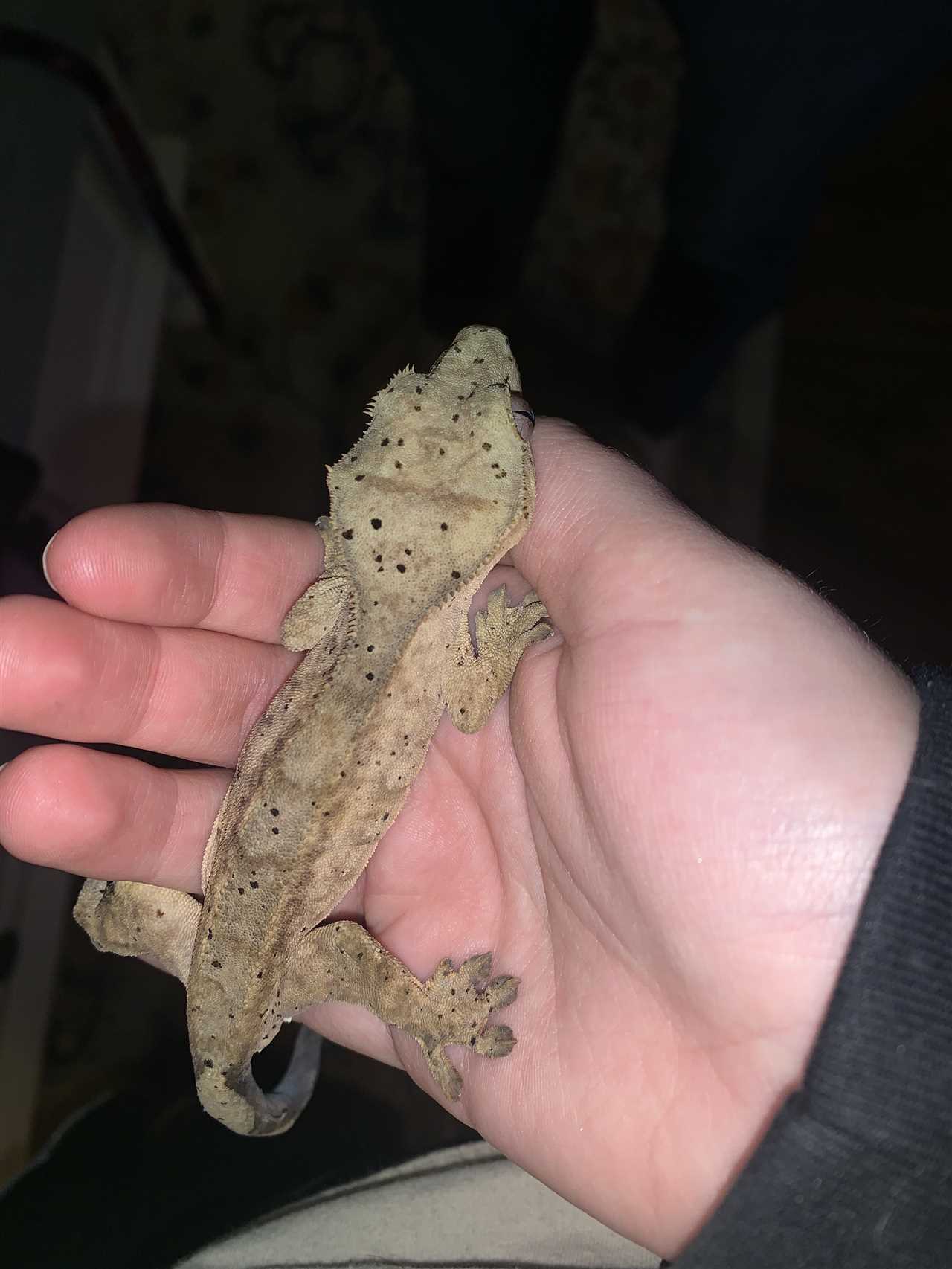What makes the Pink Crested Gecko even more unique is its ability to change its color. You may be surprised to see your gecko’s hue change from a pale pink to a bright and vibrant shade depending on its mood and surroundings. This adaptive characteristic adds to the mystique and charm of this remarkable reptile.
In addition to its striking appearance, the Pink Crested Gecko is also an ideal pet for reptile enthusiasts. Known for their docile nature, these geckos are relatively easy to handle and care for. They are primarily arboreal, meaning they spend most of their time in trees, and they are also nocturnal, making them an excellent choice for those who prefer a pet that is active during the evening hours.
Appearance
Distinctive Features
In addition to their vibrant pink color, Pink Crested Geckos have several other distinct features. They have large, expressive eyes with vertical pupils, which help them see in low light conditions. Their skin is covered in small, round scales, creating a smooth and glossy appearance. One of the most noticeable features of these lizards is their tail, which is long and slender, often with a slight curve.
Color Variations
While the Pink Crested Gecko is known for its pink coloration, there are also other variations available. Some individuals may have shades of orange, peach, or even red in addition to the pink. The intensity of the pink coloration can also vary, with some geckos having a lighter pastel pink hue while others have a deeper, more vibrant shade.
Adaptations
Crested Gecko Habitat
The crested gecko is native to New Caledonia, a group of islands in the Pacific Ocean. In the wild, these geckos are found in tropical rainforests, where they inhabit the trees and foliage. Their natural habitat provides them with the perfect environment to thrive and display their unique characteristics.
Proper lighting is also crucial for crested geckos. They require 12 hours of light and 12 hours of darkness each day. A low-wattage UVB light can be used to provide the necessary UV radiation for their health and well-being.
The crested gecko is arboreal, meaning it spends most of its time in trees. Therefore, a vertical terrarium with ample climbing opportunities is essential. Live plants add to the aesthetics of the terrarium and provide the gecko with hiding spots and places to explore.
Diet and Feeding Habits of the Pink Crested Gecko
The diet and feeding habits of the pink crested gecko are essential to its overall health and well-being. As a lizard pet, this unique and exotic reptile has specific dietary requirements that need to be met to ensure it thrives in captivity.
1. Insects
2. Gut Loading
3. Supplementation
In addition to a varied diet of insects, pink crested geckos also require supplementation with calcium and vitamin D3. Calcium is crucial for their bone health, while vitamin D3 helps with calcium absorption. These supplements can be dusted onto the insects before feeding them to the gecko.
4. Frequency of Feeding
The frequency of feeding for pink crested geckos depends on their age and size. Juvenile geckos should be fed daily or every other day, while adult geckos can be fed every two to three days. It is essential to monitor their weight and adjust the feeding schedule accordingly to avoid overfeeding or underfeeding.
5. Water
Pink crested geckos also require access to clean and fresh water. A shallow water dish should be provided in their enclosure, and it should be changed regularly to maintain hygiene. The gecko may drink directly from the dish or lick droplets of water found on leaves and other surfaces.
By following these guidelines and providing a proper diet, pink crested gecko owners can ensure their pet remains healthy, vibrant, and full of energy. Remember, a well-fed gecko is a happy gecko!
Behavior and Temperament
The crested pink gecko is a unique and exotic pet with a vibrant and colorful appearance. It is known for its distinctive pink coloration, which makes it stand out among other reptiles. This gecko species has a docile and friendly temperament, making it a popular choice for reptile enthusiasts.
One of the most fascinating aspects of the crested pink gecko’s behavior is its ability to change colors. When it is calm and relaxed, its pink hue intensifies, creating a stunning display. However, when it feels threatened or stressed, it can quickly darken its color to blend in with its surroundings.
The crested pink gecko is a nocturnal creature, meaning it is most active during the night. It spends its days resting in a hiding spot or clinging to branches with its specialized toe pads. At night, it becomes more active, exploring its surroundings in search of food.
This gecko species is arboreal, meaning it prefers to live in trees and high places. It has excellent jumping abilities and can navigate through its habitat with ease. This behavior makes it an interesting and entertaining pet to observe.
In terms of social behavior, the crested pink gecko is a solitary creature. It prefers to live alone and establish its territory within its habitat. However, it is not aggressive towards other geckos and can coexist peacefully if provided with enough space and resources.
Reproduction and Lifecycle
The pink crested gecko is a fascinating reptile species known for its unique and exotic characteristics. Apart from its eye-catching pink and colorful appearance, the gecko also has interesting behaviors and a captivating lifecycle.
Mating and Egg Laying
Once a pair has successfully mated, the female gecko will lay her eggs. Unlike some other reptile species, the pink crested gecko does not require any special nesting sites. Instead, females may lay their eggs on various surfaces within their enclosure, such as leaves or branches.
Incubation and Hatching

The eggs of pink crested geckos typically have a soft, leathery shell. After laying their eggs, the female gecko does not provide any parental care and the incubation period begins. The duration of incubation can range from 45 to 90 days, depending on factors such as temperature and humidity.
Once the eggs are ready to hatch, the baby geckos will start to break through the shell using their egg tooth. This process can take several hours or even days. Once out of the egg, the hatchlings are usually left alone to explore their surroundings and find hiding spots.
Growth and Development
The growth rate of pink crested geckos can vary, but they generally reach sexual maturity at around 1-2 years of age. At this point, they can start the reproductive cycle and continue the lifecycle by mating and producing their own offspring.
The unique lifecycle of the pink crested gecko adds to its appeal as a pet. Watching these reptiles grow from tiny hatchlings to fully mature adults can be a rewarding and educational experience for reptile enthusiasts.
Care and Maintenance
Temperature and Humidity
Proper temperature and humidity levels are crucial for the well-being of the Pink Crested Gecko. The recommended temperature range is between 75-80 degrees Fahrenheit during the day and around 70 degrees Fahrenheit at night. It is essential to maintain a consistent temperature to ensure the health of this lizard.
As for humidity, the Pink Crested Gecko thrives in high humidity environments, with levels around 70-80%. Mist the enclosure with water regularly to maintain the required humidity levels. You can also use a hygrometer to monitor the humidity inside the enclosure.
Enclosure Setup
Creating a suitable habitat for the Pink Crested Gecko is crucial for its well-being. Use a spacious terrarium with dimensions appropriate for the gecko to climb and move around comfortably. Provide plenty of branches, plants, and hiding spots to mimic its natural environment. It is recommended to use live plants to maintain the humidity levels and provide a natural feel to the enclosure.
Line the bottom of the terrarium with a substrate that promotes moisture retention, such as coco fiber or sphagnum moss. This will help maintain the required humidity levels and provide a comfortable substrate for the gecko.
Diet and Feeding

The Pink Crested Gecko is an insectivorous reptile and has specific dietary requirements. Their diet mainly consists of small insects like crickets, fruit flies, and soft-bodied larvae. You can also offer them commercially available gecko food or a diet made specifically for crested geckos.
It is essential to provide a varied diet rich in calcium and other essential nutrients. Dusting the insects with a calcium supplement before feeding will ensure the gecko receives the necessary nutritional requirements.
Handling and Interaction
When handling the gecko, make sure to support its body properly and avoid gripping their tail, as it can detach easily. Regularly observe their behavior and temperament to understand their comfort levels and adjust your interaction accordingly.
Health and Common Issues
Proper care and maintenance are essential for ensuring the well-being of the Pink Crested Gecko. One common health issue that gecko owners may encounter is shedding problems. Like other reptiles, these geckos shed their skin periodically. However, if the shedding process becomes difficult or incomplete, it can lead to stress and potential health issues. It is crucial to provide the gecko with a healthy and humid environment during the shedding process, including proper temperature and humidity levels to facilitate the shedding process.
Preventive measures:
Common health issues:

Availability and Price
The Pink Crested Gecko is a highly sought after pet due to its unique and captivating appearance. It is considered one of the most colorful and vibrant crested gecko morphs available in the exotic pet trade. However, the Pink Crested Gecko is quite rare and not as readily available as other crested gecko morphs.
Due to its rarity and high demand, the price of a Pink Crested Gecko can be quite high compared to other crested gecko morphs. The cost can vary depending on factors such as age, sex, lineage, and color intensity. On average, a healthy and well-started Pink Crested Gecko can range anywhere from $200 to $500.
When purchasing a Pink Crested Gecko, it is crucial to buy from reputable breeders or established pet stores that specialize in reptiles. This ensures that you are acquiring a healthy and ethically sourced gecko. It is also advisable to do thorough research and educate yourself about the care requirements of Pink Crested Geckos before making a purchase.
Remember, owning a Pink Crested Gecko requires commitment, time, and effort to provide proper care and a suitable environment for this unique lizard. If you are willing to invest in their well-being and appreciate their beauty, a Pink Crested Gecko can be a rewarding and fascinating pet to have.
Interesting Facts
One of the most remarkable features of the Pink Crested Gecko is its vibrant pink coloration. This hue is not just limited to a specific area of the gecko’s body but rather encompasses its entire body, making it truly eye-catching. The combination of pink and cream spots creates a dalmatian-like pattern, which adds to its charm.
As a pet, the Pink Crested Gecko is a delight to observe and interact with. Despite its vibrant and striking appearance, it is relatively easy to care for. It is a nocturnal creature, which means it is most active during the night. However, it can also be seen exploring its environment during the day, especially if provided with plenty of hiding spots and climbing opportunities.
The Pink Crested Gecko is known for its docile and calm temperament, making it a great choice for reptile enthusiasts of all experience levels. They are generally not aggressive towards humans and can even become quite familiar with their owners, often allowing gentle handling.
Pink Crested Gecko: A Unique and Exotic Reptile Species

The Pink Crested Gecko is an incredibly unique and exotic reptile species that stands out from other lizards with its vibrant and colorful appearance. This gecko is known for its distinct pink coloration, making it a highly sought-after pet in the reptile enthusiast community.
Uniqueness
What sets the Pink Crested Gecko apart from other reptiles is its exceptional and rare pink hue. This pink color is not commonly seen in reptiles, making the Pink Crested Gecko a truly extraordinary creature to behold. The combination of its pink color and its distinctive crested appearance makes it a fascinating and captivating lizard to own.
Exotic Beauty
The Pink Crested Gecko’s beauty is unparalleled in the reptile world. Its stunning pink scales glisten under light, creating a mesmerizing sight. Its crested head adds to its allure, giving it a regal look. Its unique design and colors make the Pink Crested Gecko an ideal addition to any reptile enthusiast’s collection.
Not only is the Pink Crested Gecko visually striking, but it also has a gentle and docile temperament, making it a favorite among pet owners. Its unique beauty and calm demeanor make it an ideal reptile companion for both beginners and experienced enthusiasts.
Conservation Status
Like many exotic reptile species, the Pink Crested Gecko’s population is threatened by habitat loss and illegal collection for the pet trade. Its native habitat in New Caledonia is rapidly declining due to deforestation and urbanization.
Conservation efforts are underway to protect the Pink Crested Gecko and its natural habitat. These efforts focus on promoting sustainable captive breeding programs and educating the public about the importance of conservation and responsible pet ownership.
By supporting these initiatives and adopting from reputable breeders, individuals can help ensure the long-term survival of this unique and enchanting reptile species.

I’m Lena Adams—a product of an unconventional upbringing in the African wilderness. My father, a daring explorer of African wildlife, sparked my fascination with reptiles, a passion that intertwined with the tragic loss of my mother during an expedition, leaving an indelible mark on my life. Driven to understand the creatures that captivated my parents, I embarked on my journey, sharing insights about reptiles, frogs, and lizards on my website. Through my explorations and conservation efforts, I honour my family’s legacy while seeking connections—to the creatures, nature, and the mother whose presence I yearn to understand.
